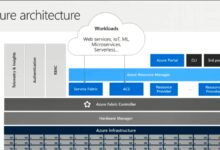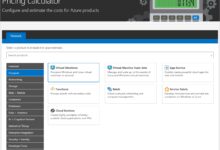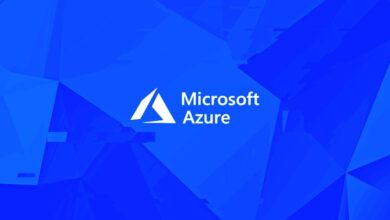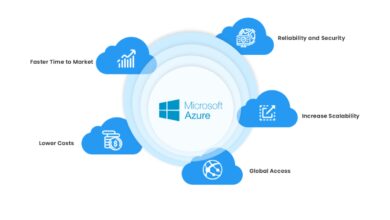and azure: 7 Powerful Ways to Transform Your Cloud Strategy
Cloud computing has reshaped how businesses operate, and when it comes to dominant players, ‘and azure’ stands out as a critical combination in the tech world. Whether you’re integrating platforms or optimizing workflows, understanding how systems interact with Azure can unlock massive potential.
Understanding the Core of ‘and azure’ in Modern Cloud Ecosystems

The phrase ‘and azure’ may seem simple, but in the context of cloud infrastructure, it represents powerful integrations—especially between Microsoft Azure and other platforms like AWS, Google Cloud, IoT devices, or enterprise software suites. It’s not just about coexistence; it’s about synergy.
What Does ‘and azure’ Actually Mean?
At its core, ‘and azure’ refers to the integration or interoperability between Microsoft Azure and another technology, service, platform, or application. For example: ‘Salesforce and Azure’, ‘Kubernetes and Azure’, or ‘Power BI and Azure’. These combinations allow organizations to extend functionality, improve scalability, and enhance data management.
- The term often appears in search queries from developers and architects seeking integration guides.
- It reflects hybrid or multi-cloud strategies where Azure plays a central role.
- Google Trends shows rising interest in phrases like ‘AWS and Azure’ or ‘Docker and Azure’.
“The future of cloud isn’t about choosing one provider—it’s about making them work together. That’s where ‘and azure’ becomes strategic.” — Cloud Architect, Microsoft Partner Firm
Why Integration Matters in Cloud Computing
In today’s digital landscape, no platform operates in isolation. Businesses rely on multiple SaaS tools, data sources, and deployment environments. Azure acts as a unifying layer when combined effectively with other technologies.
- Enterprises use Azure to bridge on-premises systems with cloud-native apps.
- Integration reduces vendor lock-in and increases operational flexibility.
- Tools like Azure Logic Apps and API Management facilitate seamless ‘and azure’ connections.
For instance, connecting SAP and Azure enables real-time analytics on enterprise resource planning (ERP) data. Similarly, combining Tableau and Azure empowers advanced visualizations using Azure-hosted data lakes.
Top 7 Use Cases of ‘and azure’ in Enterprise Environments
The versatility of Azure makes it a preferred partner in countless technological pairings. Below are seven high-impact use cases where ‘and azure’ delivers measurable value.
1. AWS and Azure: Building Hybrid Cloud Resilience
Many organizations adopt a multi-cloud strategy to avoid dependency on a single provider. AWS and Azure together offer redundancy, geographic reach, and specialized services from both ecosystems.
- Use Azure for AI/ML workloads via Azure Machine Learning while running core applications on AWS EC2.
- Leverage Azure Site Recovery to back up AWS-hosted virtual machines.
- Connect both clouds using Azure ExpressRoute and AWS Direct Connect for private, low-latency links.
According to a Gartner report, over 80% of enterprises will adopt multi-cloud strategies by 2025, making ‘AWS and azure’ a critical architectural pattern.
2. Kubernetes and Azure: Scalable Container Orchestration
Kubernetes has become the de facto standard for container orchestration. When paired with Azure, it unlocks managed services, security, and DevOps integration.
- Azure Kubernetes Service (AKS) simplifies cluster deployment and maintenance.
- Integrate AKS with GitHub Actions or Azure DevOps for CI/CD pipelines.
- Use Azure Monitor and Azure Policy to enforce compliance across Kubernetes clusters.
Developers benefit from pre-configured Helm charts and seamless integration with Azure Container Registry. This ‘Kubernetes and azure’ combo is ideal for microservices architectures.
3. Salesforce and Azure: Unified CRM and Data Analytics
Salesforce powers customer relationship management for millions, but when connected with Azure, it gains advanced analytics, AI capabilities, and secure data storage.
- Ingest Salesforce data into Azure Data Lake using Azure Logic Apps or MuleSoft.
- Apply Azure Synapse Analytics to generate predictive sales forecasts.
- Use Azure Cognitive Services to analyze customer sentiment from support tickets.
This integration allows marketing teams to personalize campaigns based on real-time insights derived from ‘Salesforce and azure’ data pipelines.
4. Docker and Azure: Accelerating Development Workflows
Docker containers streamline application packaging and deployment. Combined with Azure, they enable rapid development, testing, and scaling.
- Deploy Docker containers directly to Azure App Service or AKS.
- Use Azure Container Instances (ACI) for serverless container runs.
- Secure images using Azure Container Registry with role-based access control (RBAC).
The ‘Docker and azure’ workflow is particularly popular among startups and agile development teams aiming for faster time-to-market.
5. IoT and Azure: Building Smart, Connected Systems
The Internet of Things (IoT) generates massive volumes of real-time data. Azure IoT Hub provides a robust platform to collect, process, and act on this data.
- Connect sensors and devices to Azure IoT Hub using MQTT or AMQP protocols.
- Process streams with Azure Stream Analytics or route messages to Azure Functions.
- Visualize device health using Power BI and Azure Time Series Insights.
Industries like manufacturing, healthcare, and logistics use ‘IoT and azure’ solutions to monitor equipment, optimize supply chains, and reduce downtime.
6. GitHub and Azure: End-to-End DevOps Automation
With Microsoft’s acquisition of GitHub, the integration between GitHub and Azure has deepened, offering powerful automation for software delivery.
- Trigger Azure Pipelines directly from GitHub commits.
- Deploy code to Azure Web Apps or Kubernetes using GitHub Actions.
- Enforce security policies with GitHub Advanced Security and Azure Defender.
This ‘GitHub and azure’ synergy enables developers to build, test, and deploy applications seamlessly—reducing manual errors and accelerating release cycles.
7. AI and Azure: Empowering Intelligent Applications
Artificial Intelligence is no longer a luxury—it’s a necessity. Azure Cognitive Services, Azure Machine Learning, and OpenAI on Azure make AI accessible to developers of all levels.
- Build chatbots using Azure Bot Service and Language Understanding (LUIS).
- Train custom models with Azure ML Studio using drag-and-drop interfaces.
- Deploy generative AI models like GPT-3 via Azure OpenAI Service.
Organizations combining ‘AI and azure’ report up to 40% improvement in decision-making speed and customer engagement, according to a Microsoft case study.
How to Architect Effective ‘and azure’ Solutions
Successfully implementing ‘and azure’ integrations requires more than technical know-how—it demands strategic planning, governance, and best practices.
Step 1: Define Clear Integration Goals
Before writing a single line of code, identify what you want to achieve with your ‘and azure’ setup. Common objectives include:
- Data centralization (e.g., pulling CRM, ERP, and marketing data into Azure).
- Disaster recovery (e.g., replicating AWS workloads to Azure).
- Performance optimization (e.g., using Azure CDN to accelerate global content delivery).
Clear goals guide technology selection and prevent scope creep.
Step 2: Choose the Right Azure Services
Azure offers over 200 services. Selecting the right ones is crucial for integration success.
- For data integration: Azure Data Factory, Azure Synapse Analytics.
- For messaging: Azure Service Bus, Event Grid, IoT Hub.
- For identity and access: Azure Active Directory (AAD), Conditional Access.
Matching service capabilities to integration needs ensures efficiency and cost control.
Step 3: Implement Secure Connectivity
Security is paramount when connecting external systems with Azure.
- Use Azure Private Link to access services over private networks.
- Encrypt data in transit with TLS and at rest with Azure Key Vault.
- Apply Zero Trust principles using Azure AD and Microsoft Entra ID.
A breach in one system can compromise the entire ‘and azure’ ecosystem—so robust security is non-negotiable.
Tools and Platforms That Enhance ‘and azure’ Integration
A variety of third-party and native tools can simplify and accelerate ‘and azure’ implementations.
Azure Logic Apps: No-Code Workflow Automation
Azure Logic Apps enables users to create workflows that connect Azure and external services without writing code.
- Automate invoice processing by connecting QuickBooks and Azure Blob Storage.
- Trigger email alerts in Outlook when a new row is added to an Azure SQL database.
- Sync user accounts between Workday and Azure AD.
Its visual designer makes it accessible to business analysts and IT teams alike.
Azure API Management: Exposing and Securing APIs
When integrating systems, APIs are the glue. Azure API Management (APIM) helps publish, secure, and monitor APIs used in ‘and azure’ scenarios.
- Expose on-premises SAP functions as RESTful APIs via APIM.
- Apply rate limiting and authentication to protect backend services.
- Monitor API usage with built-in analytics and Azure Monitor.
APIM acts as a gateway, ensuring reliable and secure communication between systems and Azure.
MuleSoft and Azure: Enterprise-Grade Integration
MuleSoft’s Anypoint Platform integrates deeply with Azure, offering advanced ETL (Extract, Transform, Load) capabilities.
- Move data from legacy mainframes to Azure SQL Database.
- Orchestrate complex workflows across Salesforce, NetSuite, and Azure Functions.
- Leverage MuleSoft’s API-led connectivity approach within Azure environments.
For large enterprises, ‘MuleSoft and azure’ provides a scalable, governed integration fabric.
Challenges and Pitfalls in ‘and azure’ Implementations
Despite its benefits, integrating with Azure isn’t without challenges. Awareness of common pitfalls can prevent costly mistakes.
Data Latency and Network Performance
When systems are geographically dispersed, latency can degrade performance.
- Cross-cloud traffic between AWS and Azure may experience higher latency without ExpressRoute or peering.
- Use Azure Traffic Manager to route users to the nearest endpoint.
- Cache frequently accessed data using Azure Redis Cache.
Performance testing should be part of every ‘and azure’ deployment plan.
Cost Management and Unexpected Billing
Azure’s pay-as-you-go model is flexible but can lead to budget overruns if not monitored.
- Data egress fees from Azure can be significant in multi-cloud setups.
- Unused VMs or unattached disks continue to incur charges.
- Use Azure Cost Management + Billing to track spending by service and tag.
Implement tagging policies early to allocate costs accurately across departments or projects.
Security and Compliance Risks
Integrating external systems increases the attack surface.
- Ensure all connected platforms comply with GDPR, HIPAA, or SOC 2 as needed.
- Regularly audit access logs using Azure Sentinel (now Microsoft Sentinel).
- Use Azure Policy to enforce encryption and firewall rules across resources.
One misconfigured API key can expose sensitive data—security must be baked into every ‘and azure’ design.
Best Practices for Sustainable ‘and azure’ Architectures
To ensure long-term success, follow these proven best practices when designing ‘and azure’ solutions.
Adopt a Modular, API-First Approach
Design integrations as reusable, loosely coupled services.
- Expose functionality via REST or GraphQL APIs hosted on Azure.
- Use OpenAPI specifications to document interfaces.
- Version APIs to support backward compatibility.
This approach makes future changes easier and reduces dependency on monolithic systems.
Leverage Infrastructure as Code (IaC)
Manage Azure resources programmatically using tools like Terraform, Azure Bicep, or ARM templates.
- Define VMs, networks, and databases in code for consistency.
- Store configurations in GitHub for version control and collaboration.
- Automate deployments using Azure Pipelines or GitHub Actions.
IaC ensures reproducibility and minimizes configuration drift in ‘and azure’ environments.
Monitor, Log, and Optimize Continuously
Operational visibility is key to maintaining healthy integrations.
- Use Azure Monitor to track metrics like CPU, memory, and request rates.
- Set up alerts for anomalies using Azure Alerts.
- Analyze logs with Azure Log Analytics or integrate with Splunk.
Proactive monitoring helps detect issues before they impact users.
Future Trends Shaping ‘and azure’ Integration
The landscape of cloud integration is evolving rapidly. Staying ahead requires awareness of emerging trends.
Rise of AI-Driven Integration
AI is beginning to automate integration tasks that once required manual coding.
- Azure Logic Apps now includes AI-powered flows for document processing.
- Microsoft Power Automate uses AI to suggest automation steps.
- Future tools may auto-generate API connectors based on data patterns.
‘and azure’ solutions will become smarter, faster, and more adaptive.
Edge Computing and Azure
As latency-sensitive applications grow, edge computing is gaining traction.
- Azure IoT Edge allows running AI models directly on devices.
- Process video feeds locally in retail stores before sending summaries to Azure.
- Reduce bandwidth costs and improve response times with edge-Azure hybrids.
The ‘edge and azure’ model is set to expand in manufacturing, healthcare, and autonomous systems.
Zero Trust and Secure Access Service Edge (SASE)
Traditional network perimeters are dissolving. Zero Trust and SASE models are replacing them.
- Use Azure AD Conditional Access to enforce device and user compliance.
- Integrate with Zscaler or Palo Alto Prisma Access for secure internet breakout.
- Apply identity-centric security policies across ‘and azure’ connections.
Security will increasingly focus on identity rather than location.
Real-World Success Stories of ‘and azure’ in Action
Theoretical knowledge is valuable, but real-world examples demonstrate true impact.
Healthcare Provider Modernizes with Epic and Azure
A U.S.-based hospital network integrated its Epic EHR system with Azure to improve patient care.
- Ingested clinical data into Azure Data Lake for analytics.
- Used Azure Machine Learning to predict patient readmission risks.
- Enabled telehealth services via Azure Communication Services.
Result: 30% reduction in readmissions and faster response times for critical alerts.
Retail Chain Optimizes Supply Chain with SAP and Azure
A global retailer connected SAP S/4HANA with Azure to gain real-time inventory visibility.
- Streamed SAP transaction data to Azure Event Hubs.
- Processed data with Azure Databricks for demand forecasting.
- Integrated with Microsoft Teams for automated stock alerts.
Outcome: 25% improvement in inventory turnover and reduced overstocking.
Financial Services Firm Secures Workloads with AWS and Azure
A bank used both AWS and Azure to achieve regulatory compliance and disaster recovery.
- Primary workloads ran on AWS for scalability.
- Backed up critical databases to Azure using Azure Site Recovery.
- Used Azure Sentinel for centralized threat detection.
Benefit: Achieved 99.99% uptime and passed strict audit requirements.
What does ‘and azure’ mean in cloud computing?
The phrase ‘and azure’ typically refers to the integration of Microsoft Azure with another technology, platform, or service—such as AWS and Azure, Kubernetes and Azure, or Salesforce and Azure. It highlights interoperability and hybrid solutions in modern IT architectures.
How can I connect AWS and Azure securely?
You can connect AWS and Azure using private networking options like AWS Direct Connect and Azure ExpressRoute, or through site-to-site VPNs. Ensure encryption, identity federation via Azure AD, and network segmentation for security.
Is Kubernetes better on AWS or Azure?
Both platforms offer robust Kubernetes support—EKS on AWS and AKS on Azure. The choice depends on your ecosystem. If you’re already using Microsoft tools, ‘Kubernetes and azure’ via AKS offers tighter integration with Active Directory, DevOps, and Office 365.
What are the costs of running Docker and Azure together?
Running Docker containers on Azure can be cost-effective. Azure Container Instances (ACI) charge per second, while AKS has a low control plane fee. Costs depend on container size, duration, and data transfer. Use the Azure Pricing Calculator for estimates.
Can I use AI with Azure without coding experience?
Yes! Azure offers no-code AI tools like Azure Cognitive Services, Power Automate AI Builder, and Azure Form Recognizer. These allow business users to add intelligence to apps without writing code, making ‘AI and azure’ accessible to non-developers.
Integrating systems with Azure—what we refer to as ‘and azure’—is no longer optional; it’s a strategic imperative. From AWS and Azure hybrid clouds to AI and Azure-powered automation, the combinations are vast and impactful. By understanding use cases, leveraging the right tools, and following best practices, organizations can build resilient, scalable, and intelligent architectures. The future belongs to those who can make technologies work together—and with Azure at the center, the possibilities are limitless.
Further Reading:









